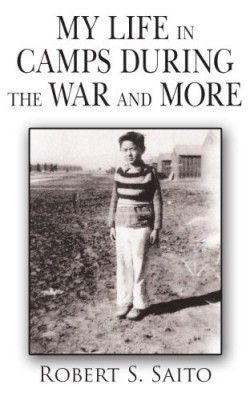My Life in Camps During the War and More
Like Granduncle Nobujiro Saito my father did not talk about his colorful life. I say colorful because of what we learned about him from snips of his talks and from other people who knew him. It is strange that people who do have a colorful life seldom talk about themselves. They are not embarrassed or shy about it; they just believe it is not that important to them or anyone else.
As the title of Robert Saito’s book indicates this is a collection of more than just a boy’s recollections of life in a Japanese-American internment camp during World War II. Saito’s book is a warm and moving tribute to one of the most enduring aspects of Japanese culture the family.
“My nieces and nephews need to know our stories because it is part of their history.” Indeed if that was Saito’s sole motivation it is admirable. The literature on this shameful episode in North American history is all too sparse. Yet what strikes the reader in Saito’s narrative is the lack of bitterness over what befell some 120000 loyal and patriotic Americans. Even the families of the Nisei soldiers—the 33000 Japanese-Americans who were members of the armed forces fighting for the United States—were separated from their homes their belongings their businesses their countrymen. Yet the detainees cultivated victory gardens just as their counterparts living in freedom.
Saito tells his story from the viewpoint of a child and in doing so touches upon the terrible effects the internment had upon children. His clean prose is reminiscent of reading Haiku; the rhythmic flow of his language suggests that the author is well versed in the revered Japanese literary traditions. Saito goes on to recreate the anxiety in their Wyoming camp when the news reached them that the United States had obliterated Hiroshima with an atomic bomb. The Saito family had deep roots in Hiroshima and the news was both cause for mourning and for joy as it signaled the end of the war. For many however the return home was equally bittersweet; so many of the valuable possessions entrusted to the government had been pillaged or destroyed while in storage.
This is a story of an American tragedy and how it affected a family with the faith and strength to endure the worse and above all to survive and prosper.
Disclosure: This article is not an endorsement, but a review. The publisher of this book provided free copies of the book and paid a small fee to have their book reviewed by a professional reviewer. Foreword Reviews and Clarion Reviews make no guarantee that the publisher will receive a positive review. Foreword Magazine, Inc. is disclosing this in accordance with the Federal Trade Commission’s 16 CFR, Part 255.

